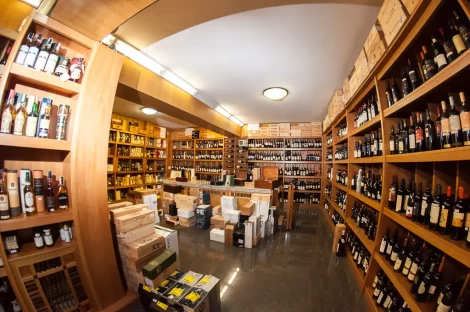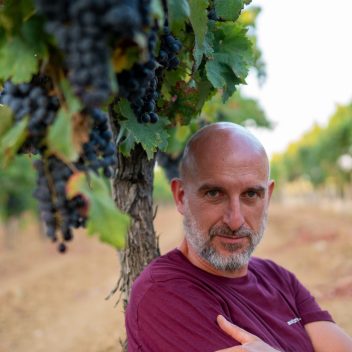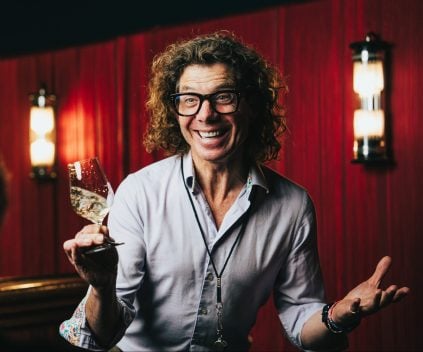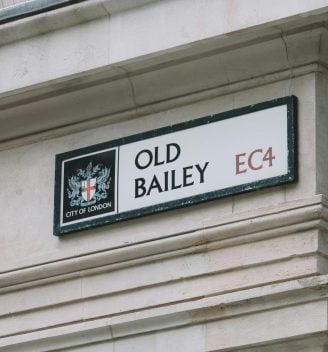"I am sure that growing up on an Italian farm, made me understand fast how important food is to transport memories, tradition, heritage, and life experiences in general," says Bazzoli.
Now settled in Sweden with his wife and daughter, having lived there for a decade after initially deciding to stay for a "few months", Bazzoli has not lost sight of his upbringing in Ponti sul Mincio, Lombardy – "a farming village of just 2,000 people".
"I was lucky to grow up on my grandfather's farm where we raised all kinds of animals, harvesting anything edible, growing grapes and making wine to sell in 25 litre demijohns, making salami from our own pigs," he says, sharing his early memories of food. "Our main income came from milk, when it still payed well. We had a herd of 15-20 cows."
Bazzoli notes that watching his grandmother in the kitchen was an informative experience.
"She was always cooking, making something nourishing out of what the farm, the land and the forest had to offer in season, nothing was wasted," he shares. "I remember cold winter morning seeing her and her sister in empty field picking wild radicchio in big batches, those would then be boiled in salted water or pickled, then stored and eaten throughout the year. Lard from our pigs, one of the ingredients I use the most in the kitchen, would become the main ingredient for doughs, oil for frying, or just the base for soffritto."
Lombard dishes from his childhood which hold a particular place in his heart include risotto alla pilota from Castel D’Ario, capunsei of Volta Mantovana–Solferino and his grandmother’s fogasin su la gradela.
Filming recipes
It was a desire to share and celebrate the culinary traditions he had grown up with, as well as those in the rest of Italy, that prompted Bazzoli to setup his Instagram page, @massicooksitalian.
While his early cooking videos show a knack for technique and short form video editing, it is his 'Forgotten Italian Classics' series which has really struck a chord.
In June he released the first episode, a recipe for bollito con la pearà, a "favourite" of his from his upbringing close to Lake Garda.
"After that first recipe, I immediately understood the magnitude of the cause, the viewer response has been extremely supportive and helpful. That helped the movement feed itself, with hundreds of people sharing the dishes they were most attached to and I was writing them all down, so I have collected around 500 regional recipes in just four months since this journey started."
While he still resides in Sweden, Bazzoli travels back to Italy to film in his studio setup – an advantage of this being that he has full access to all of the ingredients he needs for his recipes.

Bazzoli's filming setup
One of the series' mottos is that it tries to show that Italian cuisine is "not just pasta and pizza" – the two Italian food forms which have had the greatest international success by some distance.
"Pasta and pizza are filling, cheap and extremely flexible. I think that’s why they have traveled so far," says Bazzoli.
Although some pasta dishes have been included in the series, such as with a recent episode on casoncelli alla Bergamasca, he qualifies its inclusion by noting that these are not "conventional" pasta dishes, though he jokes that this caveat makes him feel "guilty".
"Almost all of the recipes are suggested to me by the audience, then I do some research through cookbooks or the internet to find their story and the most traditional version of them," explains Bazzoli of his process to choose dishes for the series. "I usually make them at the first shot, I don’t try them. That is kind of sketchy since I’m not a trained chef, especially when a difficult one pops up, but until now I have been lucky to have just a couple of fails."
While his knowledge of Italian ingredients and experience in the kitchen has helped him to avoid disasters while filming, certain recipes have proven especially challenging to get right.
"One was pastiera napoletana," he discloses. "I had to made the frolla [shortcrust pastry] three times. Frico friulano is another; a simple dish with potatoes and cheese dish that looks easy at first, but hides some secrets that are important to know before making it. One of the 30 I made last week is called cappon magro genovese, and is made from five types of vegetables, two types of fish and a salsa verde genovese that is layered into a bowl, rested for 12-24 hours and then served upside down."
Although there have been frustrations for Bazzoli, the series has also proven to be highly rewarding, with certain dishes he has cooked taking him by surprise.
One such recipe is pastisada de caval, a horsemeat stew which dates back to a 16th century battle in Verona when the locals cooked the fallen cavalry in red wine: "What came out of my pot was extraordinary, one of the best pieces of meat I ever tried in my life, it had everything. My friends were over for dinner and we consumed that meal in silence, admiring the power of this dish."
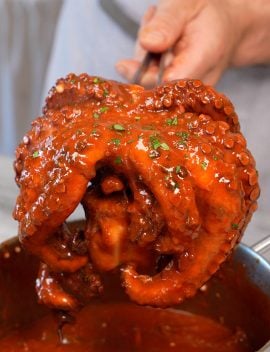
Polpo alla luciana
Another which shocked his palate with just how good it was is the polpo alla luciana: "A whole octopus is simmered in its own juices with a tiny bit of olive oil, capers and a couple of tomatoes. It stays there for an hour or so, but what comes out is unbelievable. Technically, I can't explain how it works, but the taste completely fills your mouth, satisfying all of your tastebuds. It's an almost mystical experience."
Reaching an audience
Now with more than 340,000 Instagram followers and more than 70,000 YouTube subscribers, Bazzoli's social media rise has been sudden, but when asked if it has been a surprise, he says "no".
"I read three books on how social media works before starting this series, so I knew the idea had the potential to grow fast, but how you package the message and what angle you see it from makes all the difference," he says. "It has been a lot of hard work and a bit of luck, getting the right ideas in the right moment."
His idea has clearly resonated.
"I want to bring every little culinary tradition we have in front of as many eyeballs as I can, and I’m sure in a couple of years awareness will increase dramatically. Just to think that over the last four months I have reached around 60 million people across my platforms is insane, the sky is the limit here. Also ,this project will be material for inspiration forever, if social media doesn't disappear, and I think many around the world will find positive vibes in it, and now it is almost impossible to lose those traditions."
As for who his audience is, though it might be assumed that it is mainly international, given that he is presenting in English, 20% of the viewers are in fact Italians.
"I get enormous support from them, they are part of the journey together with me," reflects Bazzoli. "I think Italians feel the cause the same as I do, because everybody knows the stigma that our food is just pasta and pizza is a big lie, and they can’t wait to tell the world about this new dish or tradition everybody outside of Italy should discover."
At present, he has no plans to change this winning formula and launch another series: "I feel this project is extremely valuable and want to stick to it, I hope many one day it will be big enough to bring even better value for everybody."
However, Bazzoli is keen to leave his kitchen and engage with these local dishes on the ground: "I would love to start traveling around Italy, meeting people and discovering the traditions and history that deserve to be remembered forever, creating some sort of documentary."
"Everything that is regional and that brings heritage and tradition to the table is good to go in my opinion," he concludes.


 The social media star resurrecting Italy's forgotten culinary classics
The social media star resurrecting Italy's forgotten culinary classics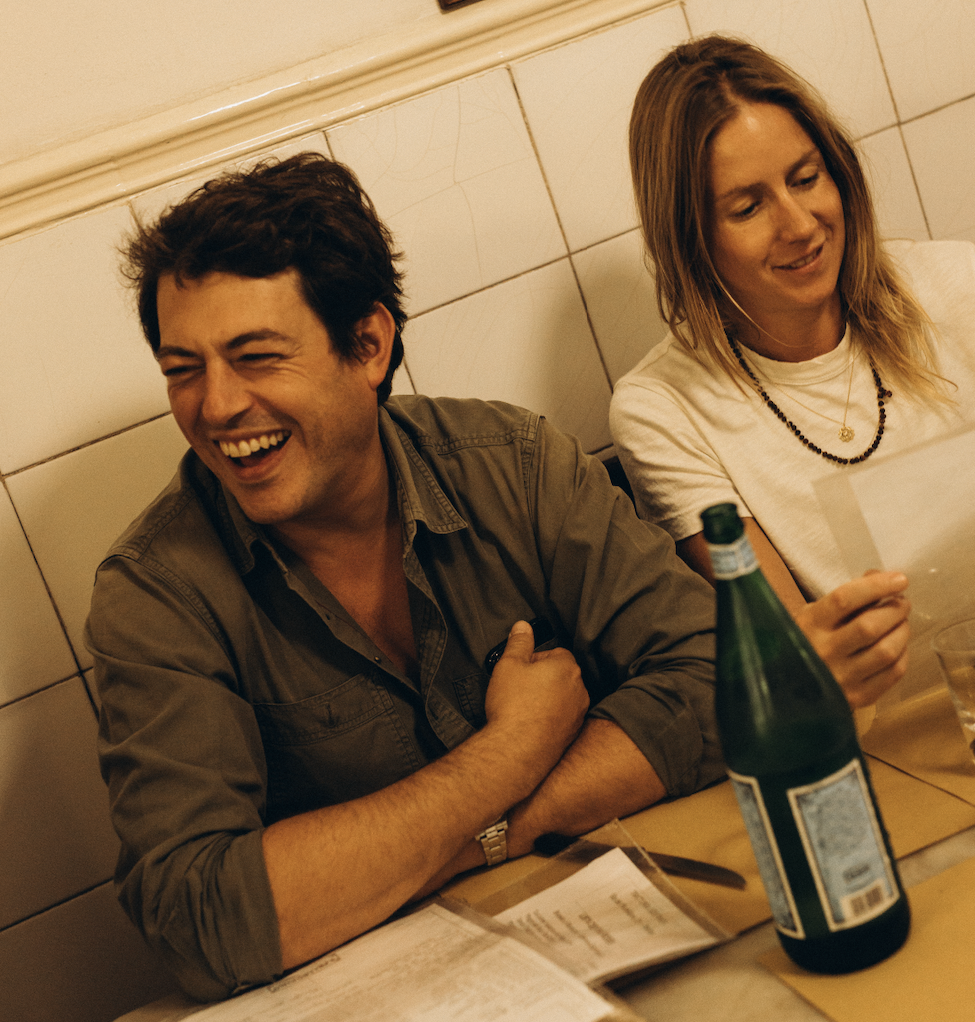 Giovanni Mazzei brings a taste of Florence to London
Giovanni Mazzei brings a taste of Florence to London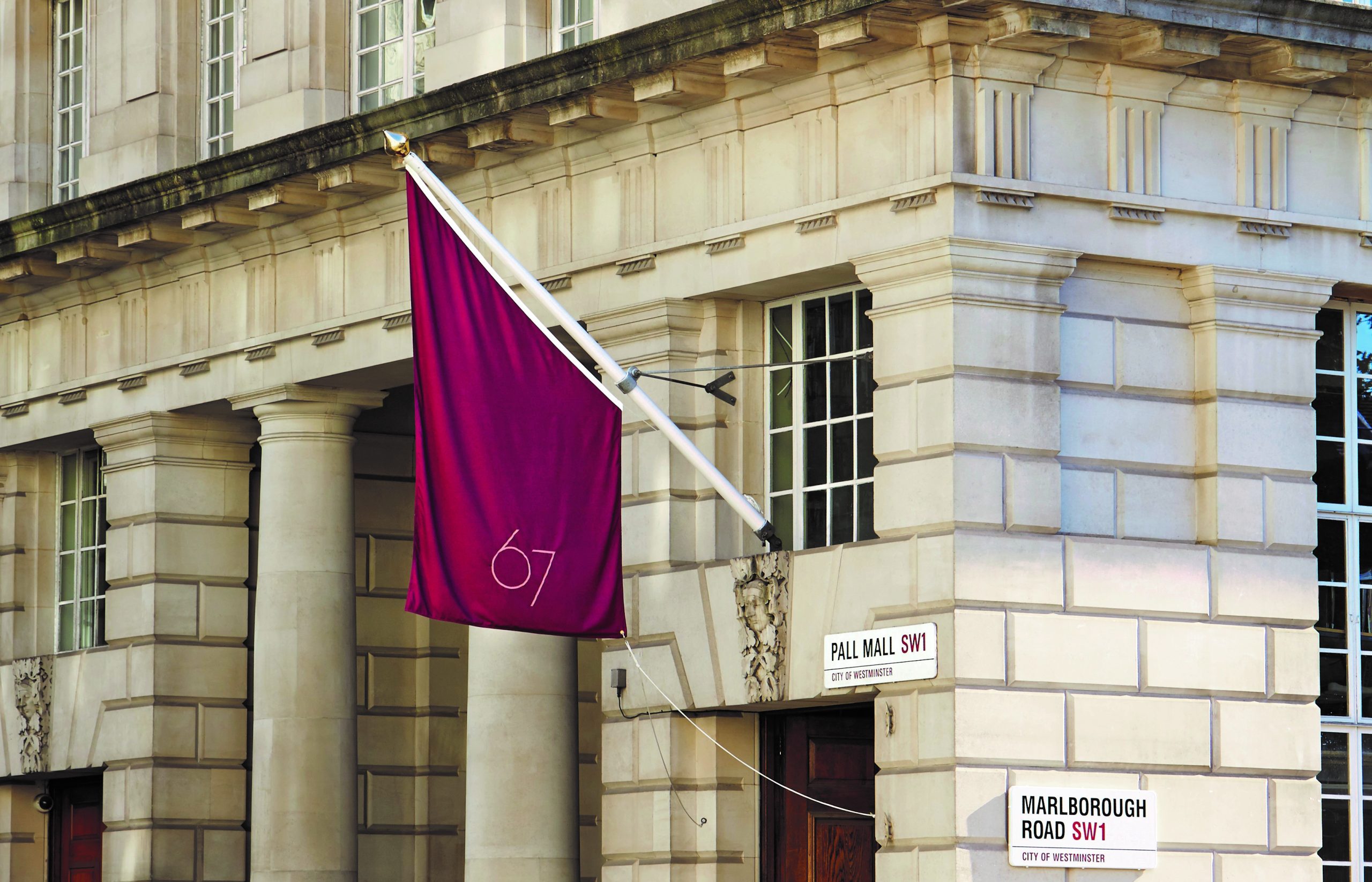 Burgundy dominates but Italy is rising: a look at London's fine wine trends
Burgundy dominates but Italy is rising: a look at London's fine wine trends Costco Prosecco recalled over exploding bottle fears
Costco Prosecco recalled over exploding bottle fears The Consorzio Vino Chianti heads to Brazil: “An attentive public and a dynamic market”
The Consorzio Vino Chianti heads to Brazil: “An attentive public and a dynamic market”
